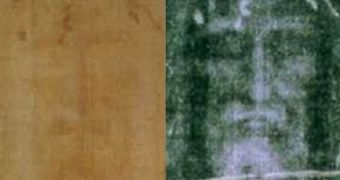The city of Jerusalem has recently revealed another of its mysterious buried treasures to archaeologists, when the experts have been able to uncover a burial chamber that was last used about the time that Jesus Christ was crucified. Inside the chamber, the scientists discovered a body wrapped inside a shroud, which dated back more than 2,000 years ago. They say that the new shroud again disproves the Turin artifact, which has been proven to be nothing more than a con many times over.
This is the first time that such a shroud is discovered in Jerusalem. Others have been unearthed over the years in the Holy Land, but never from around, or inside, the city. The body was discovered in an old burial cave at the outskirts of Jerusalem's Old City, and archaeologists say it provides a clear window into the rituals used by the people of the time when it came to bury their dead. They also add that the main reason why both the body and the funeral bandages were preserved is the fact that the cave was completely sealed off. This happened because the victim suffered from leprosy, and died of tuberculosis, the experts say.
This was proven by extensive DNA testing of the remains collected from the site. The people of the time had no method of determining the severity of the victim's conditions, but they knew that the complete isolation was the only way to keep the infection from spreading. According to historians, there were several instances in which ancient Rabbinical texts mentioned people who got out of their tombs and called for help. This was a common occurrence, as the individuals did not have the accurate medical testing methods of determining whether someone was dead or not, which we employ now.
But the thing about the new shroud is that it throws even more doubt on the authenticity of the Turin artifact. The experts were amazed to find that the newly discovered body was wrapped in two separate pieces of fabric, one for the body, and an individual one for the head. The Turin shroud is made from a single piece, which now does not appear to have been the practice at the time. The two separate pieces appear to have actually had a very practical purpose, experts explain to The Daily Mail.
“There was a separate wrapping for the head itself, which was very important because when they brought someone to burial they would place the head wrapping separately on the face in case the person wasn't actually dead and woke up again, they would be able to blow off the face wrapping and shout for help,” Shimon Gibson, who is a senior associate fellow at the W. F. Albright Institute of Archaeological Research, in Jerusalem, says.
He adds that the Turin shroud is also made with a twill weave. “The twill weave is known from this part of the world only from the medieval period, so we're talking about something that's from the Middle Ages. But the Jerusalem shroud confirmed another local practice which casts even more doubt on the Turin artifact. It wasn't one continuous sheet. What our shroud shows is that the practice of having a separate shroud or wrapping for the body and for the head was common practice,” he adds.
The story in the Gospel, which places Jesus' apostles in front of his tomb after three days, in fact originates from the widespread habit of relatives returning to their loved ones' burial chambers three days after the alleged death, to see if they were indeed dead, or still living.

 14 DAY TRIAL //
14 DAY TRIAL //